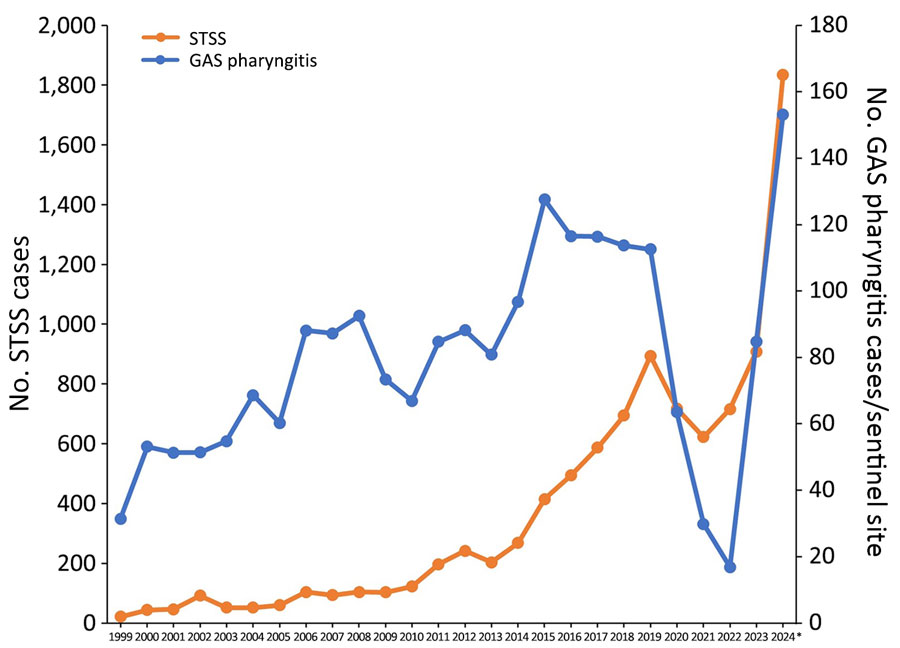Volume 31, Number 4—April 2025
Research Letter
Emerging Trends in Streptococcal Toxic Shock Syndrome, Japan
Figure 1

Figure 1. Number of reported STSS (all-cause, including GAS and other streptococcal groups) and GAS pharyngitis reported in Japan during 1999–2024. GAS pharyngitis is reported weekly from ≈3,000 pediatric sentinel medical institutions nationwide. Scales for the y-axes differ substantially to underscore patterns but do not permit direct comparisons. *Data for 2024 through week 50. GAS, group A Streptococcus; STSS, streptococcal toxic shock syndrome.
Page created: February 10, 2025
Page updated: March 24, 2025
Page reviewed: March 24, 2025
The conclusions, findings, and opinions expressed by authors contributing to this journal do not necessarily reflect the official position of the U.S. Department of Health and Human Services, the Public Health Service, the Centers for Disease Control and Prevention, or the authors' affiliated institutions. Use of trade names is for identification only and does not imply endorsement by any of the groups named above.